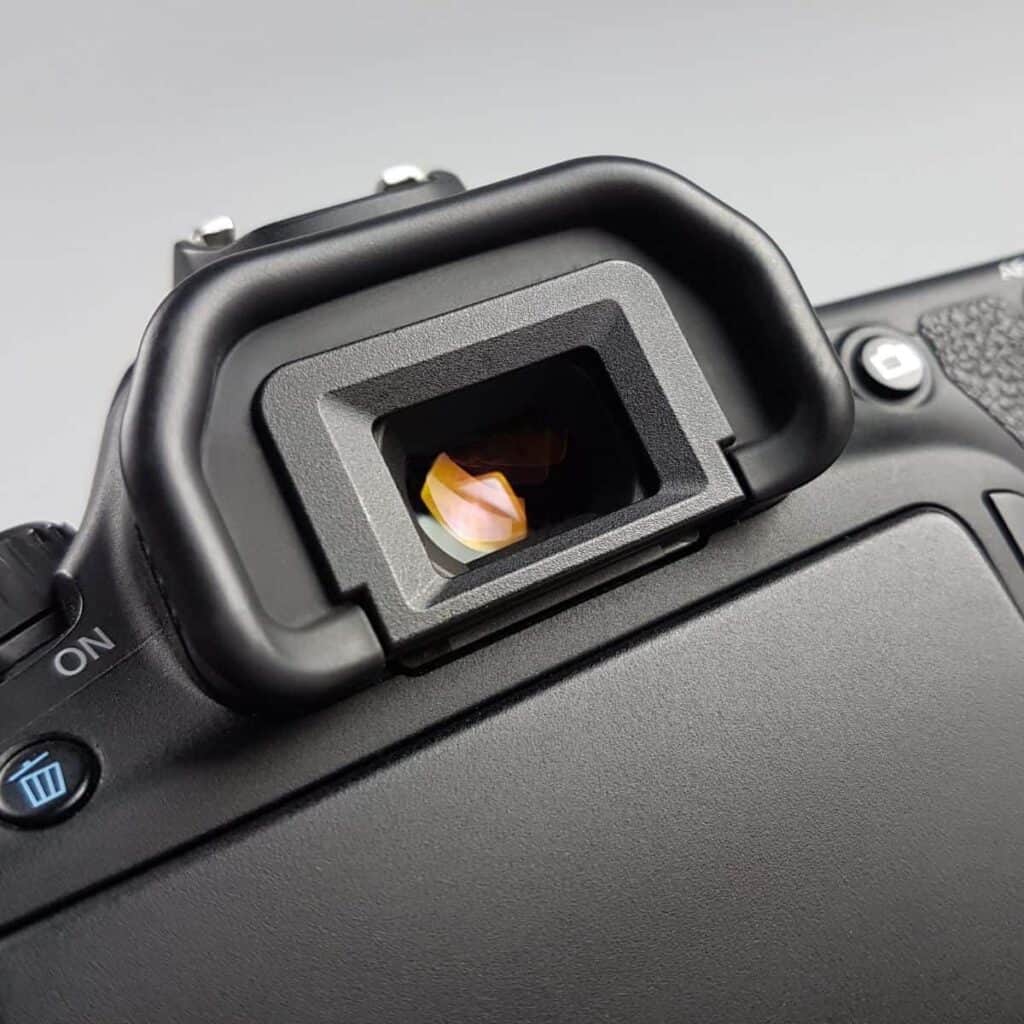In photography, a camera’s viewfinder is what you look through to take a photo. It shows you the scene that it’ll capture.

What’s a viewfinder?
The viewfinder of a camera displays the image that’ll be taken. It’s a rectangle or square at the top of the camera, which you look through to compose an image and make sure it’s in focus.
Related: A beginner’s guide to composition
To use a viewfinder, you must hold it up to your eye. Then, you’ll be able to adjust the camera settings, composition, and focus. Once you’re ready, press the shutter button to take a photo.
Whether you’re using a DSLR, film, or mirrorless camera, it’ll have a viewfinder.
Related: The top 8 film cameras
Most cameras also show what’s seen through the viewfinder on the LCD screen. Both ways of capturing a photo works, and the one you use is a personal preference.
Taking a photo by looking at the LCD screen is convenient. However, one of the reasons photographers choose the viewfinder is because they can focus solely on the image. When you look through the viewfinder, you won’t be distracted by what’s going on around you.
Types of viewfinders
The types of viewfinders are few. However, the one you use is based on the camera that you have. The following are the different types of viewfinders and how they work.
Optical or electronic
Optical viewfinders (OVF) utilize mirrors and prisms to reflect the view of the image. DSLR cameras have optical viewfinders, which are also known as through-the-lens (TTL) viewfinders.
The benefit of using an optical viewfinder is that it doesn’t consume power, which preserves your battery life. It’s also a great option if you wear glasses because it also has a diopter. It acts like glasses by making sure everything is in focus for you. The standard correction range is -3 to +1.
The drawback is that you can’t see the image until you take the photo. If you’re using a camera with an optical viewfinder, you must rely on your technical skills to properly expose the image.
Electronic viewfinders (EVF) use a small electronic display to show what the image sensor is seeing. The best feature of an electronic viewfinder is that it shows you exactly what the image will look like with your current settings.
Being able to see the result without taking the photo is a big advantage. You can make adjustments and get a live view of how the changes affect the photo.
It’ll also help you in different lighting situations and ensure that you nail your exposure without needing the exposure meter.
Related: Landscape vs. portrait orientation in photography
Pentaprism or pentamirror
With cameras that have an optical viewfinder, it’ll use a pentaprism or pentamirror. A pentaprism is exactly what it sounds like. It utilizes a solid prism to reflect through the lens and to the viewfinder.
A pentamirror is just one mirror, and they’re usually made with plastic. In most cases, high-end cameras will use a pentaprism, and entry-level cameras will use a pentamirror.
Overall, cameras with pentaprisms are better because it costs more to build them, and they don’t restrict the passage of light as a pentamirror.
Changing the view
Your lens dictates what you see when you look through the viewfinder. To change your field of view, you need to change your lens. If you have a zoom lens, zoom in or out. With a prime lens, you’ll have to swap it out for another one.
Conclusion
The viewfinder is an important part of the camera because it shows you the image that you’ll be capturing. It’s used for composition, focusing, metering, and exposure. While different cameras may have different methods, they all serve the same purpose.
Featured image courtesy of Canva.
